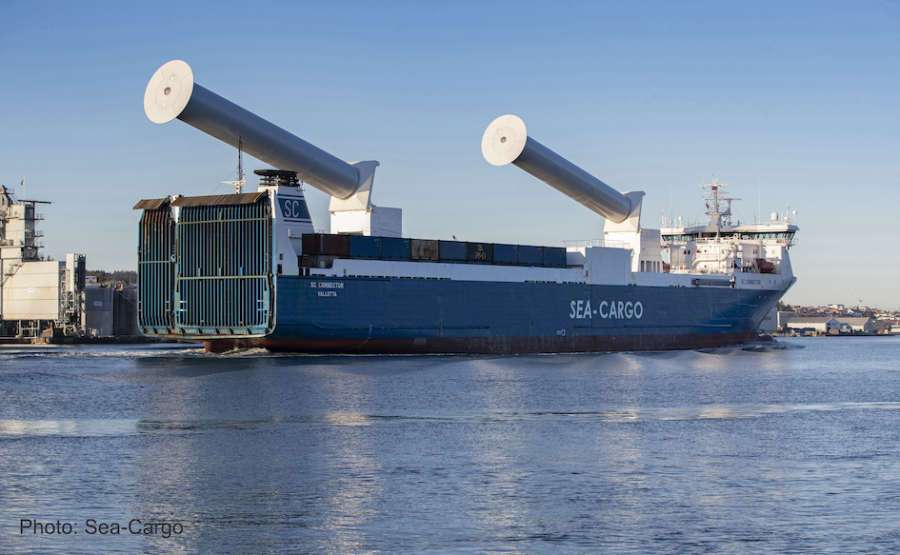In January 2021, Norsepower installed two 35x5m Rotor Sails for SEA-CARGO, a leading logistics provider in the North Sea market onboard the roro vessel, SC Connector. This was the world’s first installation of tiltable Rotor Sails, demonstrating that vessels that have to negotiate height restricted routes can benefit from this fuel and emissions-saving solution. Three months on, the vessel is demonstrating clear operational benefits.
The SC Connector, has been sailing as per its schedule between Western Norway, the Netherlands and the UK, transiting under multiple bridges and powerlines. These are the initial results:
Power consistency
The lesser-known advantage of Rotor Sails is the consistency of power. Rotor Sails provide propulsive power when vessels need it most, even in rough seas and wind, enabling vessels to maintain speed and schedule.
During testing, the two Rotor Sails on the SC Connector have generated a maximum thrust force equivalent of 7 MW propeller shaft power. Furthermore, the top speed peaked at 19.6 knots. The peak speed was achieved by Rotor Sail power (estimated at 7 MW) and approximately 3 MW from the main engine, demonstrating that the Rotor Sail generated more power than the installed main engine. This highlights that the vessel can transit faster on sailing alone, than with the installed main engine.
Improved seakeeping ability
The crew of SC Connector has noted that the Rotor Sails have made the seakeeping ability of the ship considerably better by reducing the roll and by enabling higher speed in harsh weather. Being able to complete one round trip on schedule in rough weather can add over 25% to the cumulative annual savings of the Rotor Sails. The combined power from the main engine and Rotor Sails allowed the vessel to power through in tough conditions.
Reduction in fuel consumption
Every ton of fuel makes over three tons of CO2. 10 tons of fuel were saved during one North Sea passing from Norway which decreased fuel consumption but also costs. Investment in clean technology that reduces fuel consumption offers an opportunity to future proof vessels against inevitable fuel price increases as new fuels enter the market. For example, a 10% fuel saving from a Rotor Sail can mean the difference between operating profitably or not as new fuels enter the markets and as costs for carbon emissions are implemented.
Compliance with EEXI/CII
Currently, all wind-assisted propulsion provides a benefit when calculating EEXI grades. For example, to meet EEXI requirements many older vessels are likely to be required to limit their engine power to lower emissions. However, wind-assisted propulsion allows owners to keep powering the main engine as the Rotor Sails enable reducing the average main engine power. This contribution to EEXI improvement is also a direct consequence of decreased fuel consumption. The reduced fuel costs make investments in wind propulsion technologies sound, even when looked at on a simple financial basis.
These initial findings from SEA-CARGO will continue to be monitored. These initial results do highlight the benefits of wind propulsion. It is commercially available, reduces the high carbon intensity gap until new fuels arrive, future proofs assets, saves money now; and has the potential to save more in the future. Norsepower looks forward to revealing more insights in due course.


